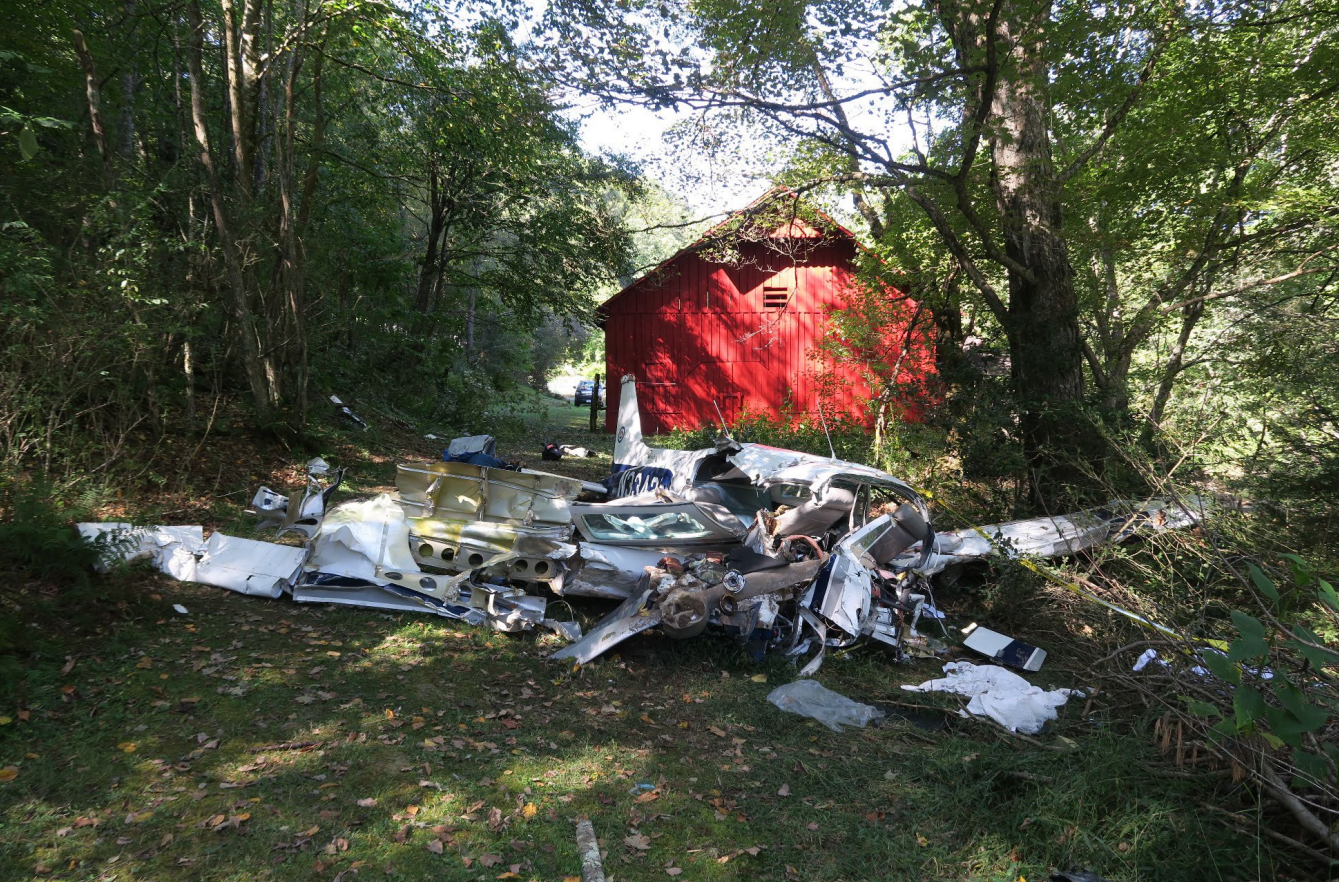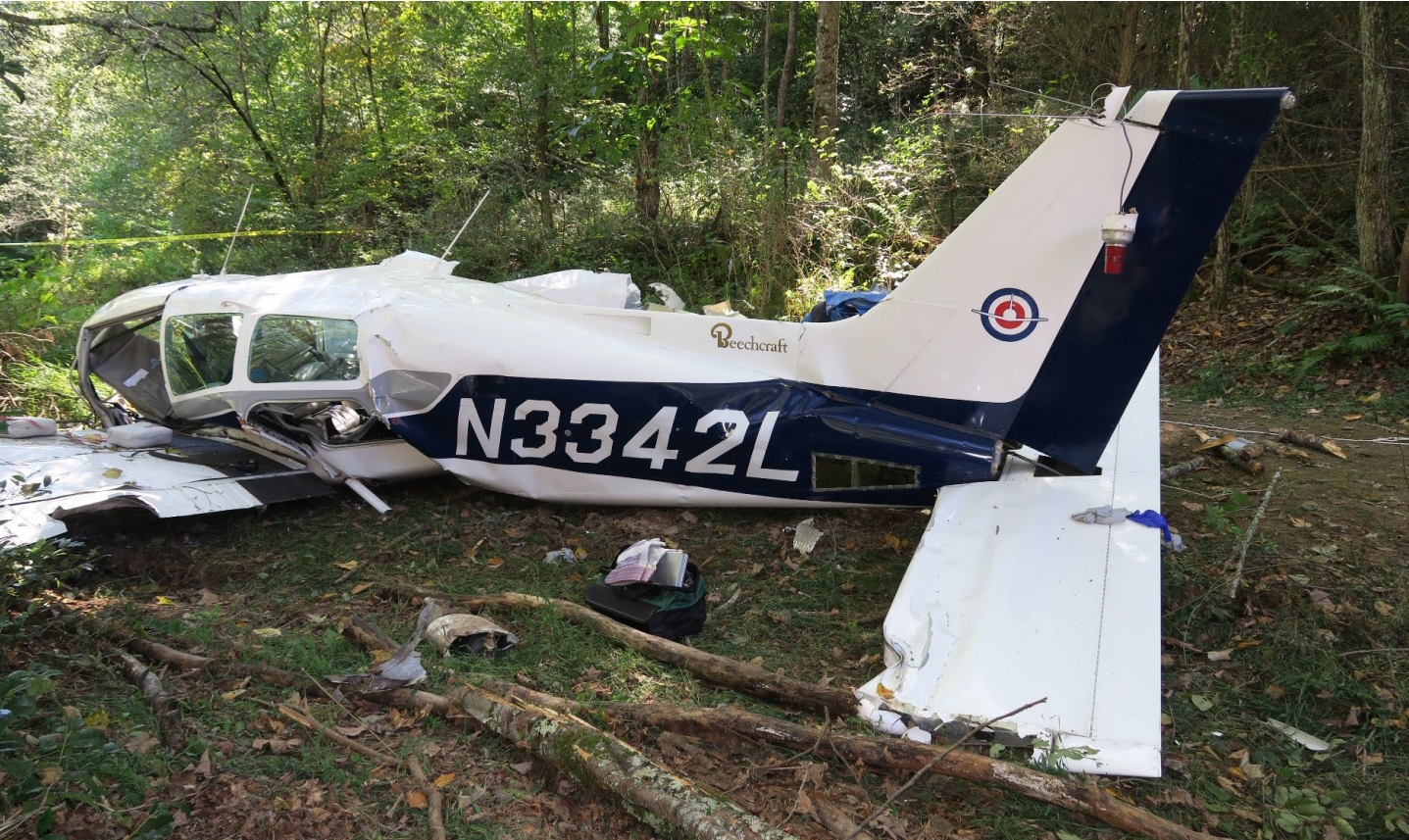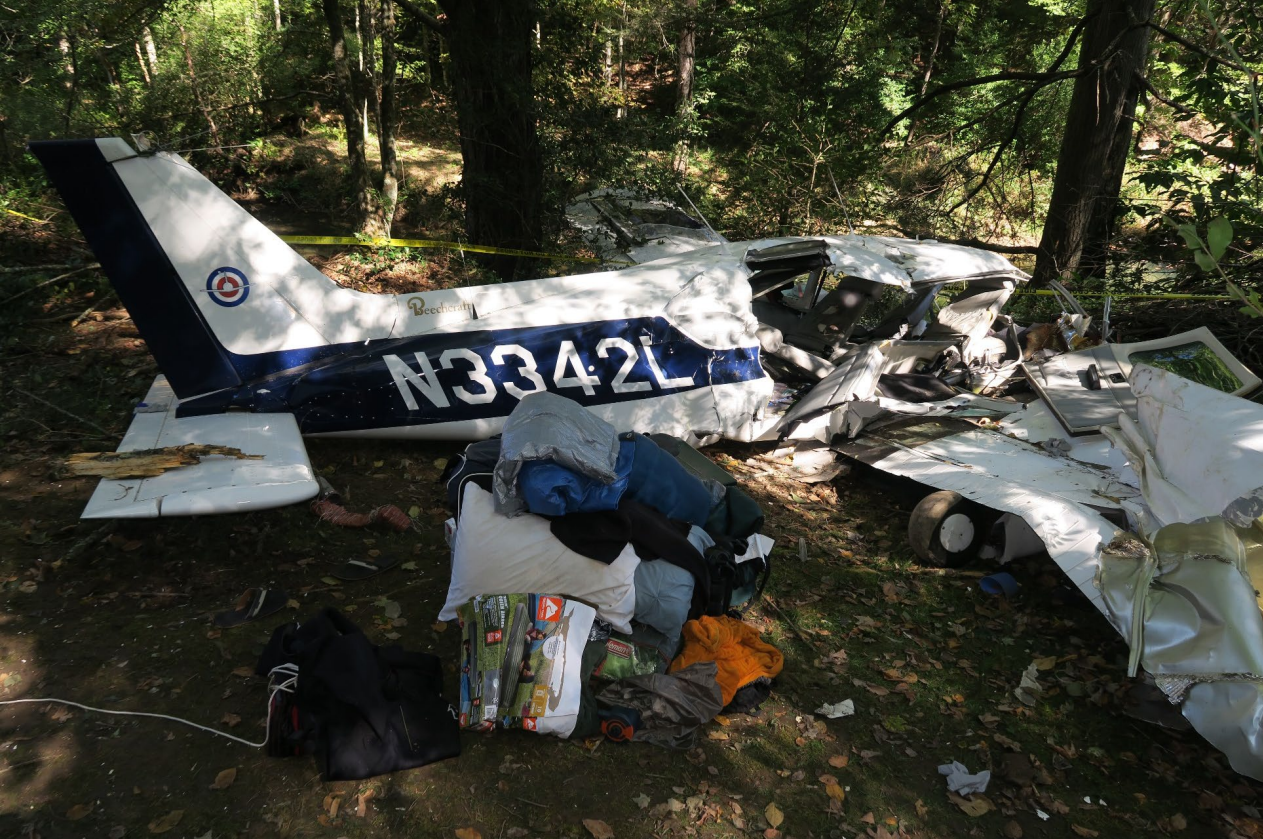
ASN Wikibase Occurrence # 268118
This information is added by users of ASN. Neither ASN nor the Flight Safety Foundation are responsible for the completeness or correctness of this information.
If you feel this information is incomplete or incorrect, you can submit corrected information.
| Date: | Sunday 26 September 2021 |
| Time: | 10:09 |
| Type: |  Beechcraft C23 Sundowner |
| Owner/operator: | Parade of Properties LLC |
| Registration: | N3342L |
| MSN: | M-1902 |
| Year of manufacture: | 1977 |
| Total airframe hrs: | 3533 hours |
| Engine model: | Lycoming O-360-A4K |
| Fatalities: | Fatalities: 3 / Occupants: 3 |
| Aircraft damage: | Destroyed |
| Category: | Accident |
| Location: | near River Gorge Airport (WV32), Lansing, WV -
 United States of America United States of America
|
| Phase: | Initial climb |
| Nature: | Private |
| Departure airport: | River Gorge Airport, WV (WV32) |
| Norfolk-Chesapeake Regional Airport, VA (KCPK) | |
| Investigating agency: | NTSB |
| Confidence Rating: |
On September 26, 2021, at 1009 eastern daylight time, a Beech C-23, N3342L, was substantially damaged when it was involved in an accident in Lansing, West Virginia. The private pilot and two passengers were fatally injured. The airplane was operated as a Title 14 Code of Federal Regulations Part 91 personal flight.
The pilot and two passengers were departing on the return flight following a weekend of camping. Three witnesses watched as the pilot initiated a takeoff from runway 22 (2,950 ft long), then aborted the takeoff. The pilot continued to the end of the runway, turned the airplane around, and initiated a takeoff from runway 04, which he also aborted. The airplane continued to the departure end of runway 04, turned around, and began another takeoff from runway 22.
One of the witnesses reported that, “…he was going too fast to stop at the end of the runway but not fast enough to take off.” The airplane lifted off “maybe” 800 ft before the departure end of the runway, cleared trees at the departure end, and flew over a creek which ran below and perpendicular to the runway. The terrain on the opposite bank was higher than the runway and included mature trees. The airplane banked steeply left and disappeared below the trees. A witness estimated the airplane’s bank angle as 45° and said that the engine sound was smooth and continuous from engine start until the sound of impact.
Postaccident examination of the airplane revealed no evidence of mechanical malfunctions or anomalies that would have precluded normal operation. The airplane had a useful load of about 862 lbs. The airplane’s weight and balance at the time of the accident was calculated using the known weights of the pilot, passengers, and baggage (a total of about 797 lbs) and estimates of the airplane’s fuel state at the time of the accident based on its likely fuel consumption during the 2.5-hour flight to the accident airport. The amount of fuel onboard at the time of the accident could not be determined; however, the airplane’s weight at the time of the accident would have exceeded its maximum gross weight with a center of gravity aft of the aft limit, even with only about 1 hour of fuel onboard.
Toxicology testing revealed that the pilot had used cannabis; low concentrations of THC and its inactive metabolite, THC-COOH, were detected in his blood. Peak effects from using cannabis typically occur in the first couple of hours and concentrations typically fall below 5 ng/mL after three hours. Since THC is stored in fatty tissues and slowly released days and weeks after using cannabis, low concentrations can be detected long after use, especially in more chronic users. While the pilot’s pattern of cannabis use is unknown, given the low concentration of THC in his blood and none in his liver, it is unlikely that the pilot was under the influence of THC. Thus, while the pilot was found to have cannabis in his body, it is unlikely that the effects of the pilot’s use of cannabis contributed to this accident.
One laboratory detected ethanol in the pilot’s pleural blood at 0.026 gm/dL; the other lab did not detect ethanol in his cavity blood. One would expect similar concentrations in both blood samples. The pilot’s internal organs had many lacerations, which can increase microbial spread and microbial production of ethanol. A concentration of 0.026 is close to the concentration where some minor effects from ethanol use can be observed. Given the differing and low level of ethanol and the condition of the body, it is likely that the identified ethanol was from sources other than ingestion. Thus, the identified ethanol did not contribute to this accident.
The pilot’s decision to operate the airplane outside of its weight and balance limitations likely resulted in degraded performance and handling characteristics, including a longer ground roll during the takeoff, reduced climb performance, and instability due to the aft center of gravity. Given the previous two aborted takeoffs, it is likely that the pilot recognized the airplane’s poor takeoff performance; however, he chose to both attempt and continue a third takeoff. After becoming airborne, it is likely that the pilot was maneuvering to avoid trees at the end of the runway when he exceeded the airplane’s critical angle of attack, resulting in an aerodynamic stall and loss of airplane control.
Probable Cause: The pilot’s exceedance of the airplane’s critical angle of attack while maneuvering to avoid trees and terrain after takeoff, which resulted in an aerodynamic stall and loss of control. Also causal was the pilot’s decision to operate the airplane outside of its weight and balance limitations and his decision to continue the takeoff after two previous aborted takeoffs during which the airplane demonstrated reduced performance.
Accident investigation:
 |
|
Sources:
https://wchstv.com/news/local/crews-responding-to-a-plane-down-in-fayette-county
https://wvmetronews.com/2021/09/26/3-dead-in-fayette-county-plane-crash/
https://www.wvnstv.com/news/first-responders-on-the-scene-of-a-plane-crash-in-the-lansing-area/
NTSB
https://registry.faa.gov/aircraftinquiry/Search/NNumberResult?NNumberTxt=3342L
https://www.airport-data.com/images/aircraft/000/289/289297.jpg (photo)
Location
Images:



Photos: NTSB
Media:
NTSB is investigating the September 26, 2021, crash of a Beech C23 near Fayetteville, WV.
— NTSB_Newsroom (@NTSB_Newsroom) September 26, 2021
Revision history:
| Date/time | Contributor | Updates |
|---|---|---|
| 26-Sep-2021 19:22 | harro | Added |
| 26-Sep-2021 19:47 | RobertMB | Updated [Source, Embed code, Narrative] |
| 26-Sep-2021 22:38 | Captain Adam | Updated [Total fatalities, Total occupants, Other fatalities, Location, Source, Embed code, Narrative] |
| 27-Sep-2021 02:51 | Geno | Updated [Time, Departure airport, Source] |
| 27-Sep-2021 03:30 | RobertMB | Updated [Registration, Cn, Operator, Location, Phase, Nature, Departure airport, Source, Damage, Narrative] |
| 11-Oct-2021 16:07 | aaronwk | Updated [Time, Destination airport, Narrative, Category] |
| 12-Oct-2021 21:03 | Captain Adam | Updated [Location, Narrative] |
Corrections or additions? ... Edit this accident description
The Aviation Safety Network is an exclusive service provided by:


 ©2024 Flight Safety Foundation
©2024 Flight Safety Foundation